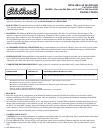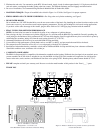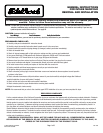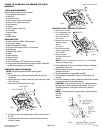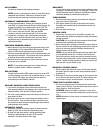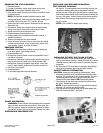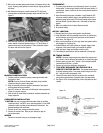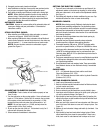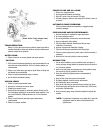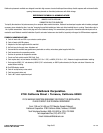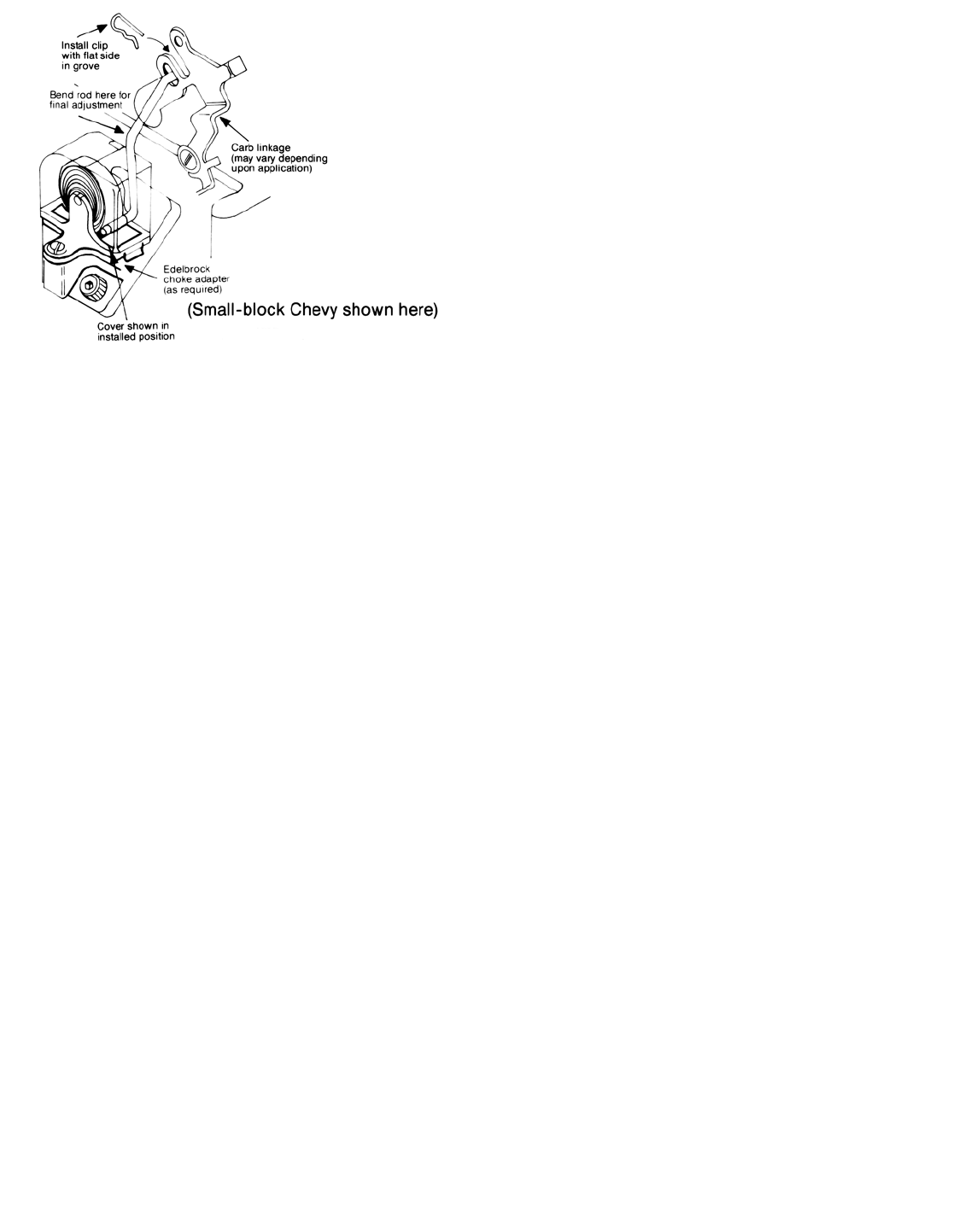
© 2001 Edelbrock Corporation
Brochure No. 63-0048
Page 7 of 8
Rev 1/02
TROUBLESHOOTING:
Below is a list of the most common problems experienced after a
manifold installation. Under each problem, we have listed several
possible causes for the problem.
WATER LEAKS:
1. Failure to use new or current gaskets and proper sealant.
CAUTION:
1. Fel-Pro brand Permatorque gaskets are not recommended for use
with aluminum intake manifolds. Fel-Pro Printoseal gaskets are
recommended.
2. Failure to use Teflon tape, pipe dope or liquid Teflon on fitting and
bolt threads as recommended.
3. Failure to replace questionable hoses or clamps.
4. Use of chrome thermostat housing.
VACUUM LEAKS:
1. Failure to replace questionable hoses.
2. Incorrect re-connection of vacuum hoses.
3. Forgetting to connect a hose.
4. Incorrect manifold gaskets or carburetor gaskets. Do not use Fel-
Pro Permatorque gaskets for any aluminum intake manifold. Use
the correct Edelbrock, OEM replacement, or Fel-Pro Printoseal
gaskets.
5. Failure to use Edelbrock carburetor spacer plates when
recommended.
6. Failure to re-torque manifold.
FOULED PLUGS AND OIL LEAKS:
1. Failure to re-torque manifold.
2. Incorrect manifold gaskets and sealant.
3. Faulty PCV valve or use of incorrect PCV valve.
4. End seal slippage or failure to use enough RTV sealant in place of
end seals.
AUTOMATIC CHOKE PROBLEMS:
Failure to follow instructions completely or clogged exhaust
crossover passages.
POOR MILEAGE AND/OR PERFORMANCE:
1. Incorrect selection of manifold for engine application.
2. In correct carburetor choice.
3. Re-curving distributor curves when not recommended.
4. Incorrect automatic choke setting.
5. Failure to adjust automatic transmission shift point per
instructions, if necessary.
6. Improper vacuum hose installation (leaking).
7. Failure to set timing to specification with timing light.
8. Failure to replace plugs, wires, points and/or rebuild carburetor if
necessary.
9. Restricted air flow due to dirty air cleaner elements.
MILEAGE TIPS:
1. Due to varied conditions, such as weather, traffic and types of
driving, average mileage should be computed with a minimum of
4 to 5 tanks of gasoline.
2. Install a vacuum gauge and program your driving habits to keep
the vacuum as high as possible at all times.
3. Keep tires inflated to highest pressure recommended by
manufacturer.
4. Keep air filter clean and replace when needed.
5. Re-adjust automatic choke for winter and summer.
6. Use light throttle when accelerating.
7. Keep points and timing to maximum factory setting at all times.
8. Check spark plugs and ignition wires at least every 10,000 miles
and replace if questionable.
9. Using a vacuum gauge, keep carburetor adjusted to highest idle
vacuum.
NOTE: For automatic transmission cars, adjust idle in gear. Idle
adjustments must be made at the manufacturer’s
specified rpm.
Figure 12



